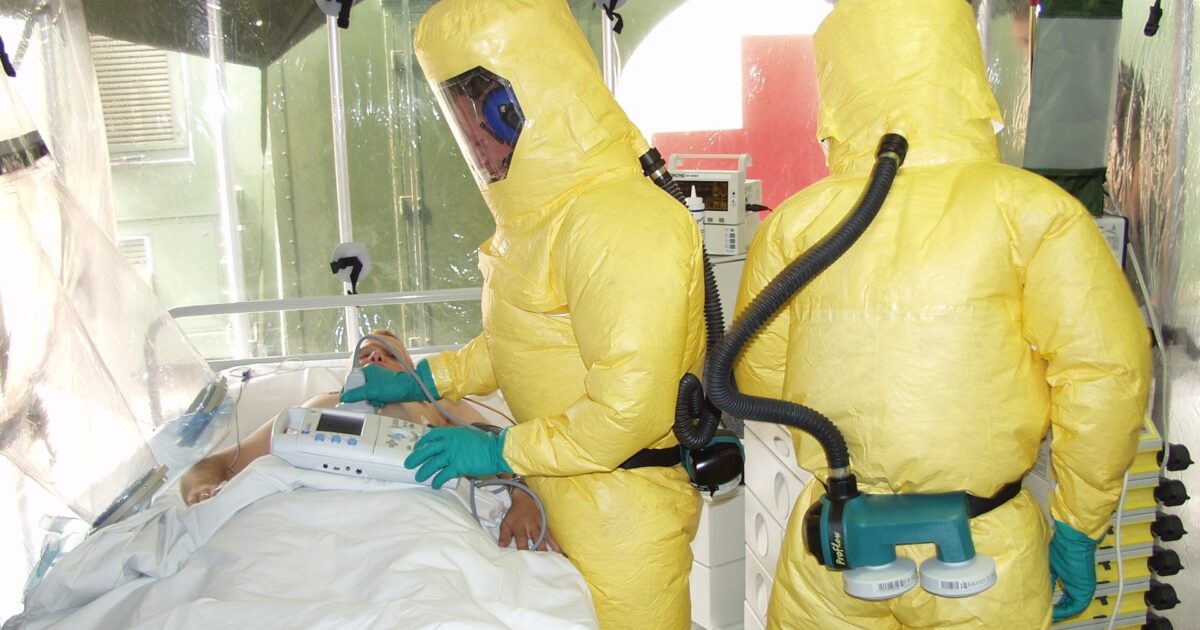Equatorial Guinea has confirmed the outbreak of an Ebola-like virus known as Marburg.
This is the first instance of Marburg spreading in the country.
Equatorial Guinea confirms country's first Marburg virus disease outbreak -WHO https://t.co/JG1CkCYcWn pic.twitter.com/iuZhH7Pufc
— Reuters (@Reuters) February 13, 2023
So far, there have been nine confirmed deaths from the virus.
Additional deaths are being investigated and the country has quarantined others suspected of infection.
According to Newsmax,
The small Central African country quarantined more than 200 people and restricted movement last week in its Kie-Ntem province after detecting an unknown hemorrhagic fever. Neighboring Cameroon also restricted movement along its border over concerns about contagion.
In addition to the nine deaths, Equatorial Guinea has reported 16 suspected cases of Marburg virus with symptoms including fever, fatigue and blood-stained vomit and diarrhea, the WHO said.
The deaths have been preliminarily linked to a funeral ceremony in the Kie-Ntem province’s Nsok Nsomo district, Equatorial Guinea Health Minister Mitoha Ondo’o Ayekaba said on Friday.
Nine people have died in Equatorial Guinea from an "outbreak" of Marburg virus, the country's health minister and the WHO said. The hemorrhagic fever is nearly as deadly as Ebola.https://t.co/ygIY4WhjXS
— DW News (@dwnews) February 13, 2023
The Marburg virus is a member of the family of viruses Ebola belongs to.
The World Health Organization describes the Ebola-like virus:
Marburg virus disease is a highly virulent disease that causes haemorrhagic fever, with a fatality ratio of up to 88%. It is in the same family as the virus that causes Ebola virus disease.
Illness caused by Marburg virus begins abruptly, with high fever, severe headache and severe malaise. Many patients develop severe haemorrhagic symptoms within seven days.
BREAKING: Equatorial Guinea declares outbreak of Ebola-like Marburg virus, at least 9 dead https://t.co/R7V6WIsYyn
— BNO News (@BNOFeed) February 13, 2023
There is no vaccine for the virus, though some treatments may increase chances of survival.
BNO News shared more.
There are no vaccines or antiviral treatments approved to treat the virus. However, supportive care – rehydration with oral or intravenous fluids – and treatment of specific symptoms, improves survival. A range of potential treatments, including blood products, immune therapies and drug therapies, as well as candidate vaccines with phase 1 data are being evaluated.
“Advance teams have been deployed in the affected districts to trace contacts, isolate and provide medical care to people showing symptoms of the disease,” WHO said in a statement. “Efforts are also underway to rapidly mount emergency response, with WHO deploying health emergency experts.”
So where did this virus come from?
Like Ebola and other viruses like it, the Marburg virus comes from animals.
DW offers more about the virus:
The rare virus was first identified in 1967 after it caused simultaneous outbreaks of disease in laboratories in Marburg, Germany and Belgrade, Serbia. Seven people died who were exposed to the virus while conducting research on monkeys.
The natural carrier of the Marburg virus is the African fruit bat, which carries the virus but does not fall sick from it.
But the animals can pass the virus to primates in close proximity, including humans. Human-to-human transmission then occurs through contact with blood or other bodily fluids.
This story is still developing as the country tries to contain the spread of the deadly virus.



Join the conversation!
Please share your thoughts about this article below. We value your opinions, and would love to see you add to the discussion!